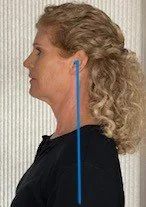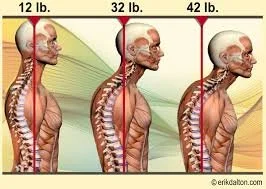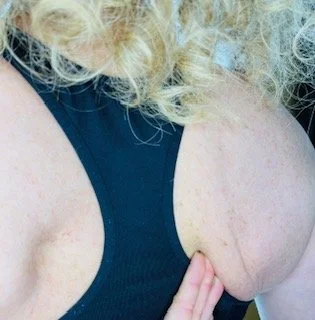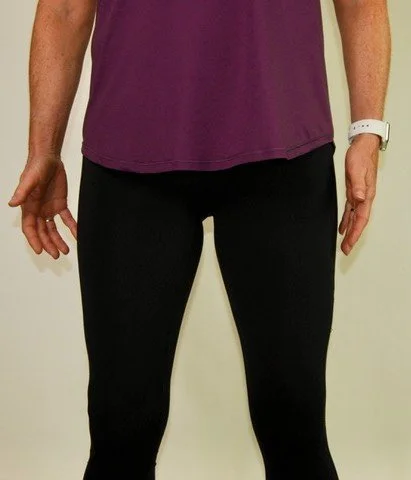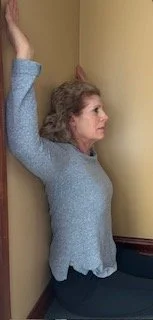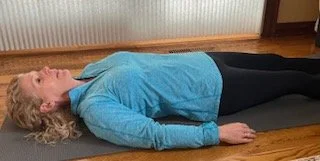Upper Body Posture & Alignment - Now That You Know
Continue to increase your knowledge and take control of your upper body’s posture and alignment. This article offers comprehensive explanations aimed at increasing awareness, along with targeted corrective activities and clear exercise instructions designed to support proactive improvement of forward head and round shoulder postures, thoracic kyphosis and poor shoulder and arm alignment.
Understanding and Improving Posture Through Awareness and Habit Change
My goal with these assessments is to help you recognize common postural habits and body misalignments. Think about all your daily activities that encourage a forward-rounded posture. Whether you are eating, using a phone or computer, reading, driving, cooking, sleeping on your side (especially if you have broad shoulders), or simply being tall, you are likely rounding your body forward without realizing it.
Over time, your body adapts to these positions, and they become your "new normal." Unfortunately, this new normal often leads to discomfort and dysfunction that worsens over time. Next time you are in a crowded place, look around, forward head posture has become increasingly common, especially among younger people in our technology-driven society.
Step One: Awareness
The first and most effective step in improving your posture and alignment is simply becoming aware of it. Whether you are sitting, standing, walking, working or sleeping, notice when your body slips into a slouched or strained position. When you catch yourself, correct it by straightening up, realigning, or stretching in the opposite direction.
Step Two: Changing Habits
Changing long-standing habits takes time, but every small adjustment reduces stress on your joints and gives your body a chance to recover. I genuinely believe that when given the right conditions, the body has an amazing ability to heal and restore balance.
Head Posture
Becoming aware of your head position is an effective first step. Each time you realign your head over your shoulders and gently straighten your upper back, you reduce the stress on these areas, promoting healing.
Be mindful not to overcorrect by forcing yourself too straight. Overcorrecting can also cause discomfort. The key is maintaining your spine’s natural curves. Imagine a string attached to the crown of your head, gently lifting you toward your full height.
Forward Head Posture
The image above shows how the further the head drifts forward from the body’s center of gravity (the red line), the more strain it places on the neck and upper back, like how a 10-pound weight feels heavier the farther it is from your body.
Simple Techniques to Improve Head Posture:
Imagine that string lifting you tall, then slowly nod your head up and down to stretch the back of your neck.
At the end of your day, lie on your back on a flat surface or in bed without a pillow for a few minutes. If that is uncomfortable, use cushions of varying thickness under your head and reduce them gradually as your posture improves.
Look at photos to evaluate your posture in candid moments.
Sit back in your chairs and car seats so your neck and back have support.
Hold reading material or devices at eye level.
Position your television so you can view it with good body alignment to avoid turning your head or body for hours at a time.
Adjust your workstation(s) or car seat(s) to support better alignment.
If you are a side sleeper, try beginning the night on your back.
Shoulder Posture
To maintain level shoulders and reduce tension:
Avoid carrying items solely on one side of your body.
Equally use both sides of your body by regularly switching shoulders and arms.
Distribute weight evenly by using both arms or use a backpack-style bag.
If you use a single-strap bag, alternate shoulders and lighten the load. (Ladies, consider decluttering those purses—carry only what you need!)
For shoulder discomfort, use chairs with armrests or support your arm with a pillow. Resting your arm on your dog counts too.
Shoulder Blade Alignment
Proper alignment of your shoulder blades means keeping them snug against the natural curve of your rib cage. To support this:
Avoid slouching or hunching, which pulls the shoulder blades outward.
Stay mindful of your posture and make frequent adjustments to reduce strain.
Sit or stand tall, align your head over your shoulders.
Again, do not overcorrect—keep the natural curves of your spine.
Periodically, take deep breaths to expand your chest to stretch and relax your ribs and spine.
Side sleepers can place a pillow between their top arm and body or use a body pillow to avoid forward pulling on the shoulder blade.
Arm Alignment
Many occupations and everyday tasks can cause muscle tightness in the chest and anterior shoulders, that also can affect the arms, wrists, and fingers. To counteract this:
Periodically take a brief break from your activity to stretch your upper body in the opposite direction.
Sit and stand tall and take several deep breaths throughout the day opening your chest to relax your ribs and spine. Should you experience any cracking or snapping sounds or feel your spine adjusting, do not be alarmed, as this may indicate a realignment toward better posture.
Stretch your biceps by straightening your arms and rotating your thumbs outward.
Rotate your wrists and open and stretch your hands and wiggle fingers too.
Thoracic Spine/Upper Body Posture and Alignment
These two evaluations will quickly identify any upper body misalignments and improvements. Perform them periodically to monitor and to improve your posture.
Try These Exercises to Improve Upper Body’s Posture & Alignment:
Practicing the following exercises regularly can help improve your posture and reduce discomfort. Each stretch should feel good, like a gentle release of tension, never painful. If you experience pain, ease off, as this may indicate you are pushing too hard.
If a specific area is noticeably tight, consider holding the stretch for a longer duration or repeat the stretch a few times. It is not necessary to perform every stretch listed; three exercises at a time are recommended to support consistency. Concentrate on the areas where tightness is most apparent.
To Improve posture: Imagine a string at the crown of your head gently pulling you to your full height.
Head nod: To stretch posterior neck muscles - Imagine a string at the crown of your head gently pulling you to your full height, then slowly nod your head up and down 10 times.
To improve forward head posture: Lie on your back in bed without pillows or on the floor for as long as tolerated. If this is uncomfortable at first, use various thicknesses of cushions or pillows under your head that you can remove with time.
Doorway Stretch: To stretch chest and front of shoulders - Stand in a doorway with your arms at chest height, palm and forearms pressing gently against the door frame as you step forward. Hold up to 30 seconds.
Biceps Muscle Stretch: Stand in a doorway with your arm at waist height palm pressing gently against the door frame as you step forward and turn slightly away from your arm. Hold up to 30 seconds.
Wall Angles: To stretch chest, front of shoulder and thoracic spine - Face a wall, place your pinkies and forearms on wall at shoulder height, and gently alternate lifting your arms away and backward 10 times.
Shoulder Rolls: To stretch the chest and front of shoulders - roll your shoulders backwards 10 times.
Stability Ball or Foam Roller Stretch: To stretch the muscles in the front of the neck and shoulders, chest, biceps, abdominals, hip flexors, and thoracic spine - lie backwards over a stability ball or foam roller for several seconds or minutes as comfort and tolerance allows.
Upper Trapezius Muscle Stretch: To stretch and release tension in the muscles of the neck and upper shoulders. To stretch right trapezius, bend, and place right arm behind your back, then tilt your head towards your left shoulder. Repeat on the other side. Hold up to 30 seconds.
Child’s Pose (Balasana) with Chin Tuck: Encourages relaxation and spinal alignment – kneel and place chest on thighs bringing buttocks to heels with chin tucked and forehead resting on floor. Place arms either alongside of the body or overhead. Hold pose for several deep breaths, relaxing further into the stretch with each exhale.
Cobra (Bhujangasana): To stretch the muscles in the front of the neck, chest, biceps, abdominals, hip flexors and top of feet. All the muscles that tighten when sitting and using a computer. Lie on your stomach with legs straight, bend your elbows and place hands on the floor next to your ribs. On inhale, lift your chest away from the floor, bend backwards, hold at the top of the stretch, and slowly exhale while lowering your body back to the floor.
Cat and Cow: To stretch the muscles along the spine. Start on all fours, with your hands lined up under your shoulders and your knees lined up under your hips. Exhale as you push your hands into the floor and curve your midback up to the ceiling, allowing the head to hang. On Inhale, lower your back bringing your naval towards the floor, while lifting your chest and tailbone towards the ceiling with head and chin lifting upwards. Movement should be smooth, Repeat 5 to 8 times.
This list of corrective exercises is not exhaustive and should not replace those prescribed by your Health Care Professional. Please consult your Health Care Provider or a Physical Therapist for more individualized exercises and treatments tailored to your specific needs.
You may also want to read my article on enhancing Lower Body Posture & Alignment. This resource offers comprehensive explanations aimed at increasing awareness, along with targeted corrective activities and clear exercise instructions designed to support proactive improvement for hip, knee, ankle, foot, and toe functions.
You can also review my second set of assessments on Mobility and Flexibility to see how well your body moves and bends.
